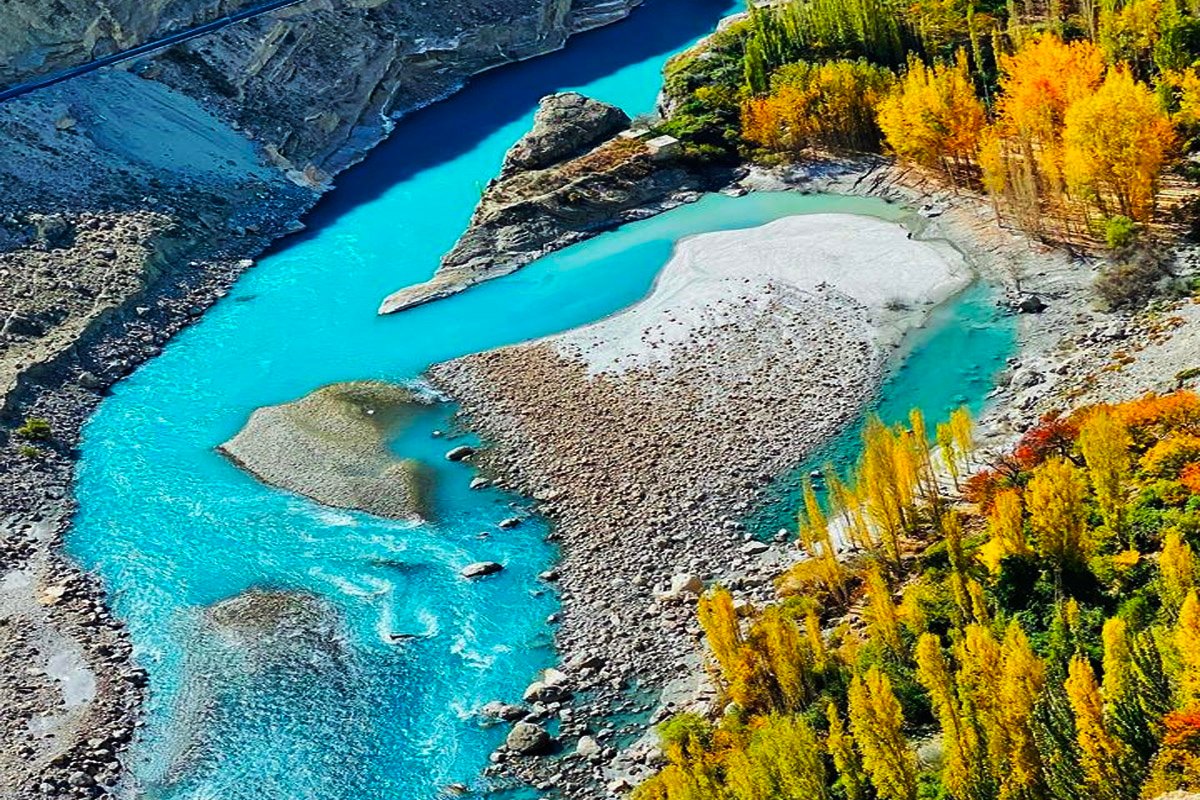Muhammad Ahsan
Necessity has long been regarded as the mother of invention, and nowhere is this more evident than in the mountainous regions of Gilgit-Baltistan, Pakistan. Amidst the challenges posed by climate change, particularly the dramatic reduction in snowfall and disruptions to traditional water cycles, the local population has demonstrated incredible ingenuity. Rather than waiting for government intervention, the people of this region have taken matters into their own hands, developing innovative solutions to secure water for agriculture. One of the most notable inventions has been the creation of ice stupas—towers of ice that not only symbolize resilience but also provide a sustainable and reliable source of water in an area grappling with increasingly erratic climate patterns.
Inspired by the work of environmentalist Sonam Wangchuk, the villagers in Gilgit-Baltistan have harnessed the power of nature to create these towering structures. By channeling water from streams, spraying it into the cold, frigid air, and allowing gravity and winter temperatures to take their course, they have developed ice stupas that gradually accumulate over the colder months. These conical ice structures begin to melt during the warmer spring and summer months, providing water to agricultural lands long before the natural glaciers begin to thaw. This ingenuity has completely transformed the agricultural landscape of the region, allowing farmers to plant multiple crops per year instead of just once. What once required waiting until June for water is now a reality in March, significantly improving crop yields and supporting the livelihoods of thousands of people.
As of now, more than 20 villages and over 16,000 people have directly benefited from this simple yet highly effective method of water conservation. Remarkably, this transformation has been achieved not through large-scale, billion-rupee government projects, but through community-driven efforts, localized knowledge, and the willpower of individuals. The villagers of Gilgit-Baltistan have demonstrated that grassroots innovation, paired with practical problem-solving, can create tangible solutions that make a real difference in people’s lives. These ice stupas are more than just a means of water conservation; they are a symbol of what can be accomplished when communities take ownership of their challenges and find local solutions to global problems.
In a country where water scarcity is becoming an increasingly urgent issue due to climate change, droughts, floods, and poor governance, the success of the ice stupa initiative offers a glimmer of hope. It highlights the potential for citizen-led innovation to address critical issues like water conservation, something that often falls under the purview of government engineers, technocrats, and ministries. But the lesson learned from Gilgit-Baltistan is clear: sustainable water management doesn’t always require top-down solutions. Instead, local communities have the potential to create meaningful change through their own efforts and knowledge.
Across Pakistan, water-related issues are becoming more prevalent. The country is grappling with dwindling freshwater resources, and regions like Gilgit-Baltistan are not alone in facing the impacts of climate change. However, the experience of these villagers demonstrates that localized solutions—when tailored to the specific needs and conditions of a region—can have a profound and lasting impact. Water conservation efforts need not rely solely on large-scale infrastructure projects or state intervention. In fact, many of the most effective and sustainable solutions can come from the communities themselves.
One of the most compelling aspects of the ice stupa project is its scalability. What has worked in Gilgit-Baltistan could easily be adapted to other parts of Pakistan that face similar challenges. For example, in urban centers and rural areas alike, rainwater harvesting could become a more widespread practice. This involves capturing rainwater from rooftops and storing it for later use, reducing reliance on depleting groundwater reserves. Another viable solution could be drip irrigation, which minimizes water waste by delivering water directly to plant roots, thus improving efficiency and crop yields. Likewise, repairing leaks in existing infrastructure and promoting water-saving habits can make a significant difference in conserving this vital resource.
Additionally, grey-water recycling, which involves reusing wastewater from sinks, showers, and washing machines for non-potable purposes like irrigation, can further reduce the demand for fresh water. In coastal areas, small-scale desalination units could be deployed to convert seawater into usable freshwater, providing relief to communities facing saltwater intrusion and dwindling freshwater sources. In urban areas, policies that promote the use of water-efficient appliances and the reuse of treated wastewater for parks and construction projects can have a long-term positive impact.
However, the adoption of these practices will require awareness and education. In Gilgit-Baltistan, the success of the ice stupas was largely due to the willingness of local communities to learn from each other and share knowledge. This emphasis on collaboration and learning can serve as a model for other areas. School-based programs that teach children about water conservation, coupled with community-led workshops and awareness campaigns, can help foster a culture of sustainability.
The future of water in Pakistan hangs in the balance. With rising temperatures, increasingly erratic weather patterns, and an escalating population, the country faces a growing water crisis. However, the innovative solutions pioneered by the people of Gilgit-Baltistan offer a powerful reminder that resilience and hope can come from even the most unlikely of places. As the world’s glaciers melt, the coldest ideas—like the ice stupas—can bring the warmest hope to communities facing the challenges of a changing climate. The example set by these villagers demonstrates that when people come together, share their knowledge, and take responsibility for their resources, they can find practical solutions that have a lasting and meaningful impact.
In conclusion, the ice stupa initiative in Gilgit-Baltistan not only serves as a testament to the power of local innovation but also offers valuable lessons for water conservation efforts across Pakistan. It is a clear demonstration that community-driven initiatives, fueled by practical knowledge and the will to adapt, can offer sustainable solutions to the global challenges posed by climate change. Whether through ice stupas, rainwater harvesting, drip irrigation, or other local solutions, it is crucial that Pakistan—like many other countries—embraces decentralized water management strategies and empowers its communities to take an active role in ensuring the future of this precious resource.

















